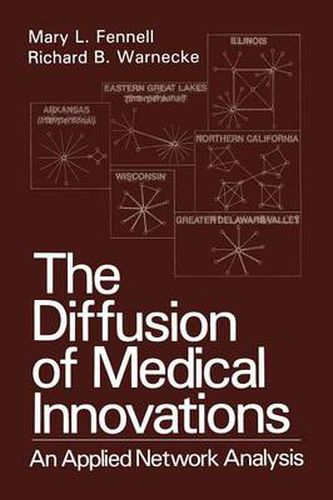Readings Newsletter
Become a Readings Member to make your shopping experience even easier.
Sign in or sign up for free!
You’re not far away from qualifying for FREE standard shipping within Australia
You’ve qualified for FREE standard shipping within Australia
The cart is loading…






This title is printed to order. This book may have been self-published. If so, we cannot guarantee the quality of the content. In the main most books will have gone through the editing process however some may not. We therefore suggest that you be aware of this before ordering this book. If in doubt check either the author or publisher’s details as we are unable to accept any returns unless they are faulty. Please contact us if you have any questions.
This book has several objectives. Most basically it presents an approach to assessing interorganizational innovation diffusion. To do this we have tried to link contempo rary organizational theory with more person-centered diffusion theory. We have also combined contingency theory with the resource dependence perspective to explain why organizations might choose to initially consider an innovation, re define it to suit their particular environmental context, and then implement it. Another objective has been to examine how environmental constraints can limit the ways in which diffusion channels form, and can determine when diffusion can be truly organizational and when it will depend upon individuals. In doing so, we have tried to indicate how organizational structures emerge to manage re sources in ways that are consistent with those environmental constraints. We have borrowed the notion of boundary management from resource dependence, and we have used it to examine how organizations use various boundary management strategies to preserve their autonomy in exchange relationships with other organi zations. We have done this both at the network level and at the level of individual organizations.
$9.00 standard shipping within Australia
FREE standard shipping within Australia for orders over $100.00
Express & International shipping calculated at checkout
This title is printed to order. This book may have been self-published. If so, we cannot guarantee the quality of the content. In the main most books will have gone through the editing process however some may not. We therefore suggest that you be aware of this before ordering this book. If in doubt check either the author or publisher’s details as we are unable to accept any returns unless they are faulty. Please contact us if you have any questions.
This book has several objectives. Most basically it presents an approach to assessing interorganizational innovation diffusion. To do this we have tried to link contempo rary organizational theory with more person-centered diffusion theory. We have also combined contingency theory with the resource dependence perspective to explain why organizations might choose to initially consider an innovation, re define it to suit their particular environmental context, and then implement it. Another objective has been to examine how environmental constraints can limit the ways in which diffusion channels form, and can determine when diffusion can be truly organizational and when it will depend upon individuals. In doing so, we have tried to indicate how organizational structures emerge to manage re sources in ways that are consistent with those environmental constraints. We have borrowed the notion of boundary management from resource dependence, and we have used it to examine how organizations use various boundary management strategies to preserve their autonomy in exchange relationships with other organi zations. We have done this both at the network level and at the level of individual organizations.